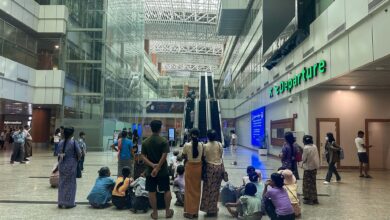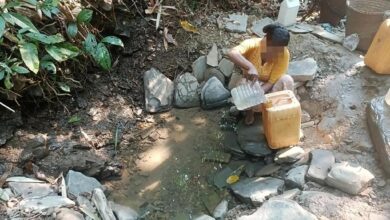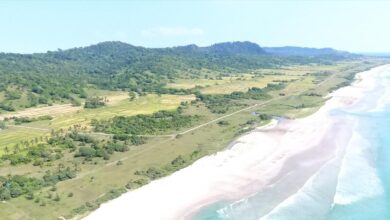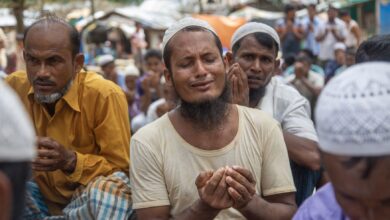
Win Khant Maung did not move. He had bruises all over his body. You only knew he was alive from the low moans he made as he lay there in agony.
The 18-year-old was arrested at around 10am on Wednesday for taking part in an anti-junta protest near Kantharyar park in Yangon’s North Okkalapa township.
After he was apprehended, Win Khant Maung was forced to spend the entire day in the back of a prison truck. At around 5pm, he was finally transferred to Insein prison, where police and military personnel brutally assaulted him, inflicting his near-fatal injuries.
Later that night, he and a number of others ended up at the Shwe Pauk Kan police station. The police informed a volunteer group, who then contacted ward officials. This is how the families of the detainees learned what had happened to them.
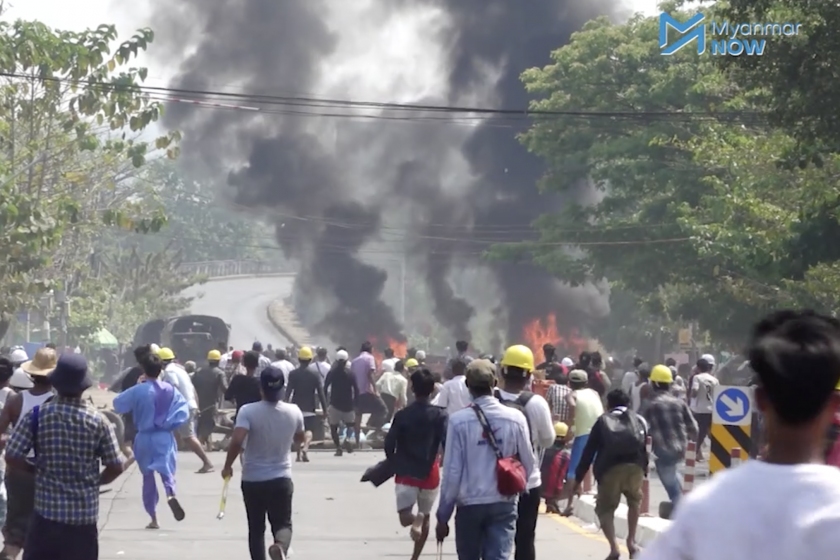
Many were distraught when they saw how their loved ones had been treated.
“He was covered in bruises—at least 30 of them. You can’t even touch his head. They hit him in the groin as well, and his legs, his arms, his knees. Everywhere!” Win Khant Maung’s mother said, sobbing.
He was covered in bruises—at least 30 of them. You can’t even touch his head. They hit him in the groin as well, and his legs, his arms, his knees. Everywhere!
“He didn’t have a weapon. There was no need for this level of abuse,” she added with anguish in her voice.
Currently, doctors involved in the Civil Disobedience Movement are tending to his injuries. Because he can’t be sent to a hospital, he is being cared for in a religious hall in his ward.

‘Kill them all!’
March 3 was a day of escalation in the ruling junta’s war on unarmed protesters opposed to its February 1 takeover. Using live ammunition, it killed dozens of people around the country and wounded many more. There were casualties reported in Mandalay, Monywa, Myingyan, Salay and Mawlamyine.
But North Okkalapa, in the northern outskirts of Yangon, is where security forces unleashed the worst violence that day.
It started early, as thousands of people approached the North Okkalapa roundabout to begin another day of protests first thing in the morning. A combined force of soldiers and police blocked their way at the roundabout and the bridge leading into the township.
The protesters slowly backed away rather than face a direct confrontation, but then the crackdown began without warning.
“We were stepping back slowly because we thought we could reason with them. Then, all of a sudden, the soldiers and police got off their trucks. Five minutes later, they started firing rubber bullets and throwing smoke bombs,” a protest leader told Myanmar Now.
Even after five smoke bombs were used against them, the protesters held their ground. That’s when the soldiers started lobbing tear gas canisters. Soon, they moved on to live ammunition.
We heard them saying, ‘Can’t you shoot? What are you afraid of? Shoot them all! Kill them all!
At this point, the protesters were forced to flee into side streets to escape, their pursuers close behind them.
“They even hit people who let us into their homes. When some of us ran into houses on Nweni 6 lane, they came right inside the houses, swearing and hitting. Hitting people with guns! And kicking them with their military boots,” the protest leader recounted.
Hiding inside, the protesters could clearly hear conversations between the soldiers and police.
“We heard them saying, ‘Can’t you shoot? What are you afraid of? Shoot them all! Kill them all!’” the protest leader said.
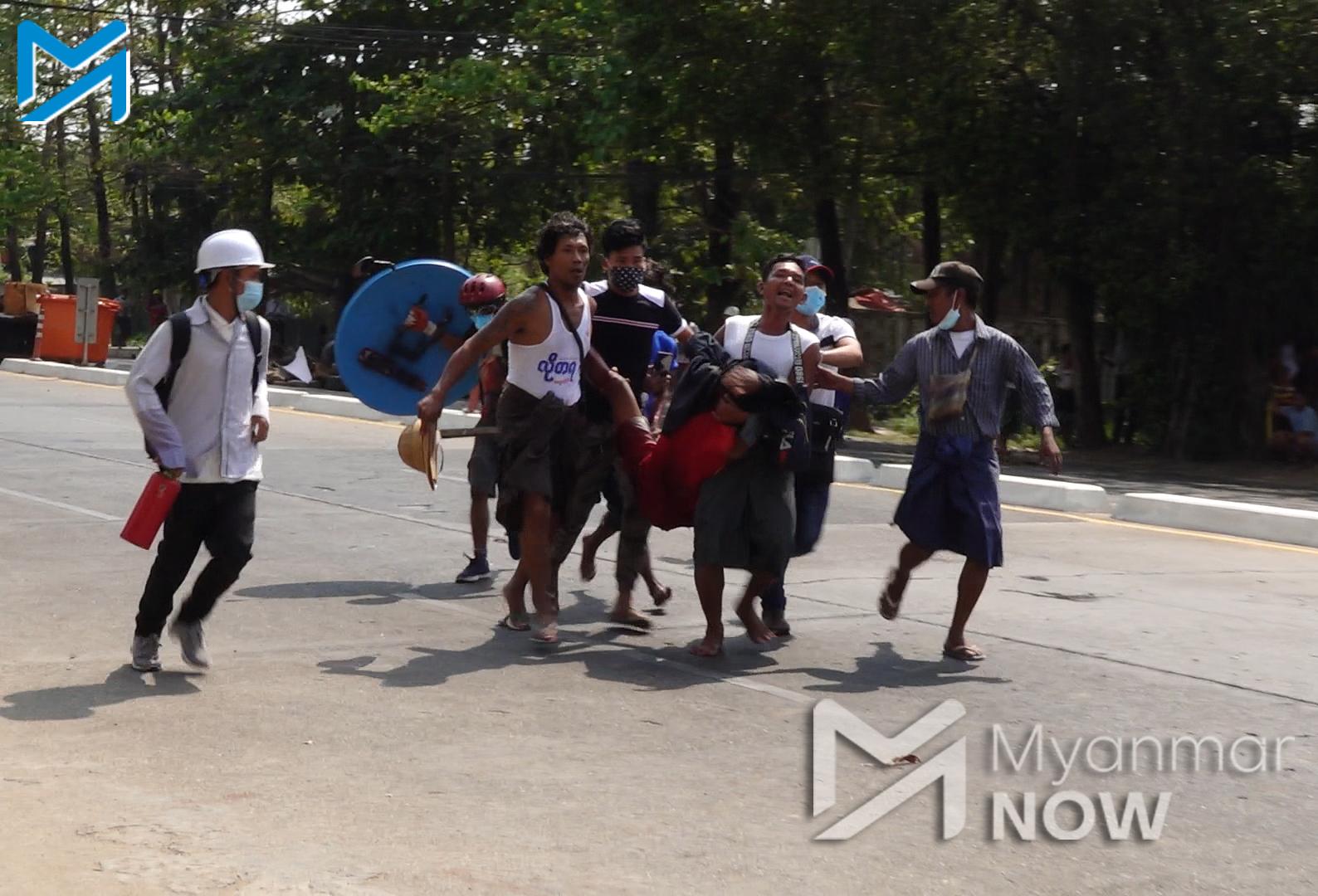
Mid-day massacre
Three of the protesters were captured sometime before noon, but this didn’t stop the others from regrouping. Using car tires, they set up a barricade near the bridge.
Then, at around 1pm, the soldiers and police started cracking down again, setting the tires on fire and shooting at the protesters, this time to kill.
Htet Aung, a 19-year-old protester, was one of the first casualties. He died of a gunshot wound to the chest, according to a doctor who attempted to save his life.
Min Oo, 20, who was also among the first to fall, was shot in the pelvic region and died at the hospital that evening.
Another unidentified protester was shot in the back after he was caught trying to flee. A video of the incident shows him being kicked after he falls to the ground and later dragged away, possibly dead.
When we yelled, ‘Give us the students back,’ they started firing. First they used rubber bullets, then stun grenades. When the crowd dispersed, they started firing with machine guns
Many near the bridge attempted to escape this killing spree, but were soon captured. More than 100 young protesters were rounded up, and as they were being herded into three military trucks, local residents started shouting, demanding their release.
This was met with another violent—and this time even more deadly—outburst from the security forces.
“When we yelled, ‘Give us the students back,’ they started firing. First they used rubber bullets, then stun grenades. When the crowd dispersed, they started firing with machine guns. We saw these kids in the front drop one by one,” said Ye Kyaw Thu, an emergency volunteer who witnessed the scene.
The soldiers took their positions after getting off the trucks and fired non-stop with semi-automatic weapons, he recalled.
Although they were facing unarmed civilians, the soldiers kept shooting at them like they were enemies on the battlefield, he added.
“Before we could tell everyone to get down, those at the front started to drop. The soldiers used tear gas and machine guns against the crowd for like five minutes. After they threw a few more stun grenades and tear gas canisters, the trucks left,” said Ye Kyaw Thu, who helped get eight victims of this brutal attack to the nearest emergency clinic.
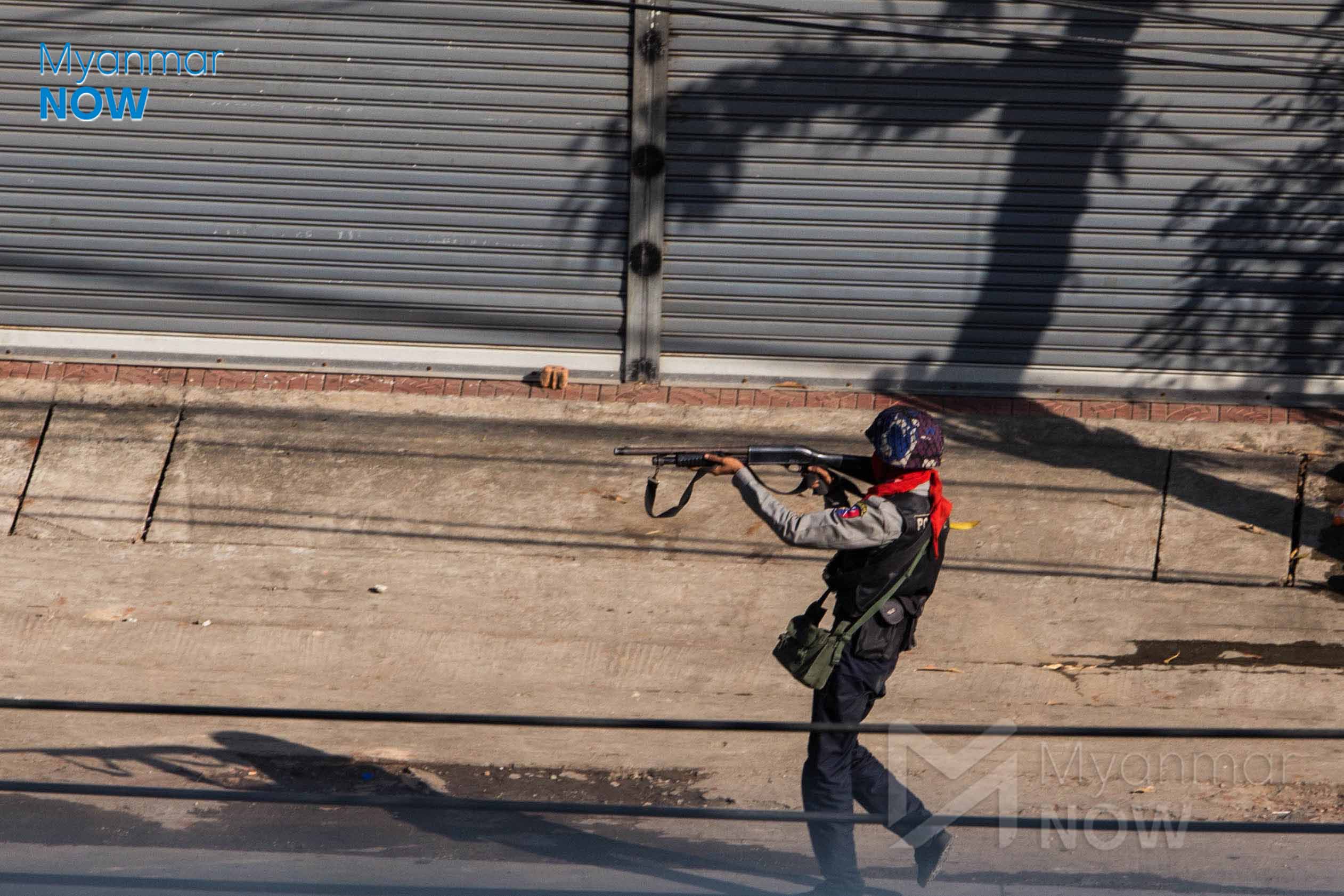
A night of terror and torture
The brutality did not end there. Emergency rescue workers were also targeted, including three who were seen being viciously beaten in CCTV footage that later went viral.
As the three kneeled on the ground near their ambulance, police took turns kicking them and landing heavy blows to their heads and bodies with batons and rifle butts.
Later that night, security forces continued to terrorize the residents of North Okkalapa. At about 11pm, around 20 military trucks entered the township and started firing indiscriminately, according to witnesses.
Most of these vehicles then proceeded to North Dagon township for a raid on the office of the Free Funeral Service Society (FFSS), one of Myanmar’s most respected charities.
In addition to damaging office equipment, soldiers and police also physically assaulted 10 members of the FFSS staff.
A few of the trucks, however, took a detour to the Shwe Pauk Kan police station, where they dropped off eight seriously injured protesters, including Win Khant Maung.
“The military trucks were shooting to clear a path, warning people to stay off the street. Then they dumped the eight injured people in front of the police station,” said a social worker who helped the injured protesters get medical attention.
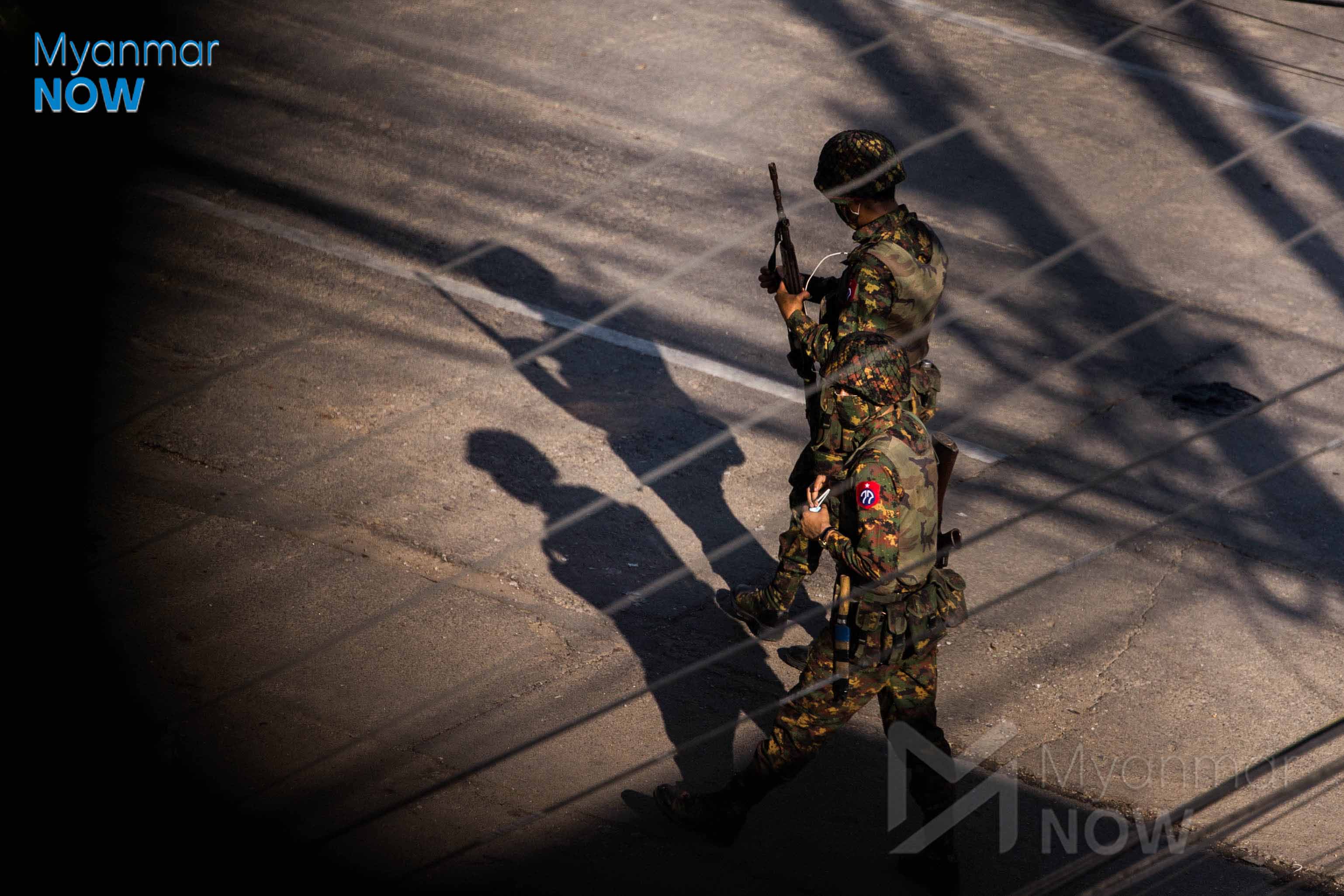
A doctor who attended to Win Khant Maung said his injuries were likely caused by rubber bullets shot at close range.
“These aren’t injuries he received during the crackdown. This was deliberate torture after his arrest. They shot him with rubber bullets. That’s why he has this many injuries,” the doctor told Myanmar Now.
Eight people were confirmed dead from the various crackdowns in North Okkalapa on Wednesday, while another 73 sustained serious injuries, some of them life-threatening.
These aren’t injuries he received during the crackdown. This was deliberate torture after his arrest. They shot him with rubber bullets
More worrying, said doctors, is that there have been multiple reports of people unaccounted for. At least some of the missing persons are presumed dead.
According to a UN official, there were at least 38 deaths nationwide on March 3, making it the deadliest day so far in the now month-long struggle to force Myanmar’s junta to restore civilian rule.
